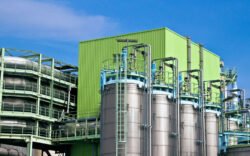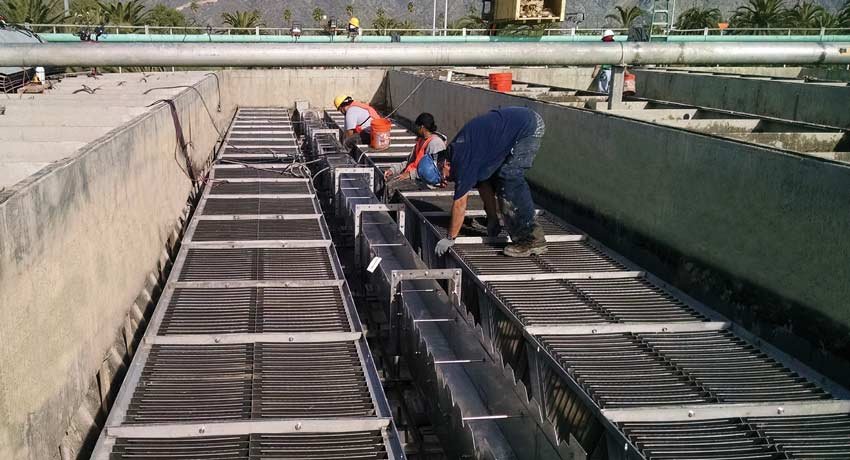Pump and Treat PFAS
Pump and Treat PFAS: An In-Depth Examination of Efficacy, Challenges, and Innovations in Contaminated Water Remediation
Introduction
The environmental challenges posed by per- and polyfluoroalkyl substances (PFAS) have garnered increasing scrutiny over the past few years. As of July 2025, ongoing studies and regulatory developments have revealed these chemicals’ pervasive nature and potential long-term health risks. Given this, many municipal authorities, design engineers, and environmental consultants are turning to "pump and treat" systems as a primary method for managing PFAS contamination in groundwater. This article dives deep into the mechanics of pump and treat systems specifically tailored for PFAS remediation, addressing their implementation challenges while providing a valuable resource for stakeholders engaged in this pressing issue.
Understanding Pump and Treat Systems
H2: What are Pump and Treat Systems?
Pump and treat systems operate by extracting contaminated groundwater, treating it to remove impurities, and discharging the treated water back into the environment or into a water supply. The process usually incorporates various treatment technologies such as activated carbon adsorption, ion exchange, and advanced oxidation processes to effectively remove contaminants, including PFAS.
H3: Mechanisms of PFAS Removal
PFAS compounds can be particularly resistant to conventional water treatment methods due to their chemical stability. The primary mechanisms employed in pump and treat systems include:
-
Activated Carbon Adsorption: Commonly used for PFAS, granular activated carbon (GAC) traps PFAS molecules through physical adsorption. However, it typically requires frequent replacement or reactivation to maintain efficacy.
-
Ion Exchange: This technique effectively removes PFAS from water by exchanging PFAS anions for benign ions. The efficiency of ion exchange systems is highly dependent on the competing ions present in the water.
- Advanced Oxidation Processes (AOPs): AOPs utilize powerful oxidants to break down PFAS molecules into less harmful byproducts. Emerging technologies, such as electrochemical oxidation, show promise but are not yet widely implemented due to cost and complexity.
H2: The Regulatory Landscape for PFAS Treatment
As of mid-2025, regulatory agencies, including the Environmental Protection Agency (EPA), continue to adapt stringent regulations concerning PFAS. In 2024, the EPA introduced the PFAS Action Plan, mandating lower detection limits and establishing guidelines for municipal water systems. Compliance requires immediate action, making efficient treatment methods like pump and treat more relevant than ever.
H3: Recent Regulatory Developments
-
Lifetime Health Advisories: In 2024, the EPA issued health advisories for PFOA and PFOS, nearly setting action thresholds in part per trillion, necessitating improved treatment options.
-
Funding Programs: Government funding programs aimed at improving water treatment infrastructure have been expanded, providing municipalities and organizations with financial resources for implementing innovative pump and treat technologies.
- Mandatory Monitoring: New regulations require regular monitoring for PFAS levels in municipal water supplies, increasing the demand for effective treatment solutions.
H2: Implementation Challenges for Pump and Treat Systems
Despite the promise of pump and treat systems in addressing PFAS contamination, challenges persist, and a comprehensive understanding is necessary for successful implementation.
H3: Site-Specific Considerations
-
Hydrogeological Factors: The local geology significantly affects PFAS transport and distribution. Understanding aquifer characteristics, soil permeability, and groundwater flow patterns is crucial for designing an efficient pump and treat system.
-
Operational Costs: Ongoing operational and maintenance costs can be high, particularly when frequently replacing media in adsorption systems or managing electronic components in advanced oxidation methods.
- Waste Management: The treatment process generates waste materials that may also be contaminated with PFAS, necessitating proper disposal strategies. This adds to the complexity and cost of remediation efforts.
H3: Technological Limitations
The effectiveness of pump and treat systems can vary based on the type and concentration of PFAS present. For instance, long-chain PFAS may prove more challenging to treat due to their stronger chemical bonds.
H2: Case Study: Successful Applications of Pump and Treat PFAS Systems
H3: Municipal Water Supply in Michigan
In 2023, a Michigan municipality implemented a pump and treat system to remediate PFAS contamination. The project illustrated efficient teamwork between engineers, local governments, and regulatory bodies. The system employed multi-barrier methodologies involving both adsorptive and oxidative treatment techniques to comply with evolving regulations.
- Outcome: After several months of operation, monitoring showed a reduction of PFAS levels to below regulated limits, demonstrating the potential of integrated pump and treat systems.
H2: Future Innovations in PFAS Treatment
H3: Emerging Technologies
As of 2025, research efforts continuously evolve to tackle PFAS contamination more effectively.
-
Nanomaterials: Research into nanomaterials provides new avenues for enhancing adsorption capacities and reducing treatment times.
-
Membrane Technologies: Techniques like reverse osmosis are being explored for their ability to filter out PFAS at lower concentrations, potentially allowing for smaller treatment systems in the future.
- Hybrid Systems: Combining various remediation methods, such as employing electrochemical treatment alongside pump and treat processes, is an exciting area of exploration.
H2: Conclusion
The utilization of pump and treat systems for PFAS remediation represents a critical response to one of the most pressing environmental concerns today. While the path ahead is fraught with challenges, including regulatory compliance, operational costs, and technological limitations, the potential for success remains high, particularly as innovations continue to emerge. For municipalities, environmental engineers, and regulatory bodies, understanding the nuanced mechanics and recent developments in pump and treat systems is essential. By staying informed and adaptable, stakeholders can take effective steps towards safeguarding public health and achieving compliance with evolving regulatory mandates.
In conclusion, a multifaceted approach that incorporates effective pump and treat systems may be the linchpin for overcoming the complex challenges posed by PFAS contamination. As technology advances and more resources become available, the implementation of comprehensive solutions will be critical in protecting our water supplies for future generations.


